- 型号: CP2103-GMR
- 制造商: Silicon Laboratories
- 库位|库存: xxxx|xxxx
- 要求:
| 数量阶梯 | 香港交货 | 国内含税 |
| +xxxx | $xxxx | ¥xxxx |
查看当月历史价格
查看今年历史价格
CP2103-GMR产品简介:
ICGOO电子元器件商城为您提供CP2103-GMR由Silicon Laboratories设计生产,在icgoo商城现货销售,并且可以通过原厂、代理商等渠道进行代购。 CP2103-GMR价格参考¥询价-¥询价。Silicon LaboratoriesCP2103-GMR封装/规格:接口 - 控制器, USB Bridge, USB to UART USB 2.0 UART Interface 28-QFN (5x5)。您可以下载CP2103-GMR参考资料、Datasheet数据手册功能说明书,资料中有CP2103-GMR 详细功能的应用电路图电压和使用方法及教程。
Silicon Labs的CP2103-GMR是一款高度集成的USB转UART桥接控制器,属于接口-控制器类别。该芯片广泛应用于需要将USB接口转换为串行通信(UART)的各种场景中。 典型应用场景包括:工业控制设备(如PLC、HMI)、嵌入式系统开发板、POS终端、医疗仪器、测试测量设备以及消费类电子产品。由于其支持全速USB 2.0(12 Mbps)和标准UART协议,CP2103-GMR常用于实现PC与微控制器、传感器或其他串口设备之间的稳定通信。 该芯片内置EEPROM,可自定义厂商ID(VID)、产品ID(PID)、串口号、供电配置等参数,便于产品定制化和品牌识别。同时,它支持多种数据位、停止位和校验格式,兼容性强,驱动成熟,可在Windows、Linux和macOS系统上便捷使用。 此外,CP2103-GMR采用小型化的QFN-28封装,功耗低,适合空间受限的便携式设备。其高可靠性和简化的设计使其成为替代传统RS-232接口的理想选择,广泛用于需要稳定、低成本USB转串口解决方案的场合。
| 参数 | 数值 |
| 产品目录 | 集成电路 (IC)半导体 |
| 描述 | IC CTRLR BRIDGE USB-UART 28MLP输入/输出控制器接口集成电路 USB-TO-UART BRIDGE |
| 产品分类 | |
| 品牌 | Silicon LabsSilicon Laboratories Inc |
| 产品手册 | |
| 产品图片 |
|
| rohs | 符合RoHS无铅 / 符合限制有害物质指令(RoHS)规范要求 |
| 产品系列 | 接口 IC,输入/输出控制器接口集成电路,Silicon Labs CP2103-GMR- |
| 数据手册 | |
| 产品型号 | CP2103-GMRCP2103-GMR |
| 产品培训模块 | http://www.digikey.cn/PTM/IndividualPTM.page?site=cn&lang=zhs&ptm=25291 |
| 产品种类 | 输入/输出控制器接口集成电路 |
| 供应商器件封装 | 28-QFN(5x5) |
| 功能 | 桥,USB 至 UART |
| 包装 | 带卷 (TR) |
| 协议 | USB |
| 单位重量 | 67.750 mg |
| 商标 | Silicon Labs |
| 安装风格 | SMD/SMT |
| 封装 | Reel |
| 封装/外壳 | 28-VFQFN 裸露焊盘 |
| 封装/箱体 | MLP-28 |
| 工作温度 | -40°C ~ 85°C |
| 工作电源电压 | 3.6 V |
| 工厂包装数量 | 1500 |
| 接口 | UART |
| 最大工作温度 | + 125 C |
| 最小工作温度 | - 55 C |
| 标准 | USB 2.0 |
| 标准包装 | 1,500 |
| 电压-电源 | 3 V ~ 3.6 V |
| 电流-电源 | 20mA |
| 系列 | CP2103 |
| 配用 | /product-detail/zh/CP2103EK/336-1163-ND/769477 |

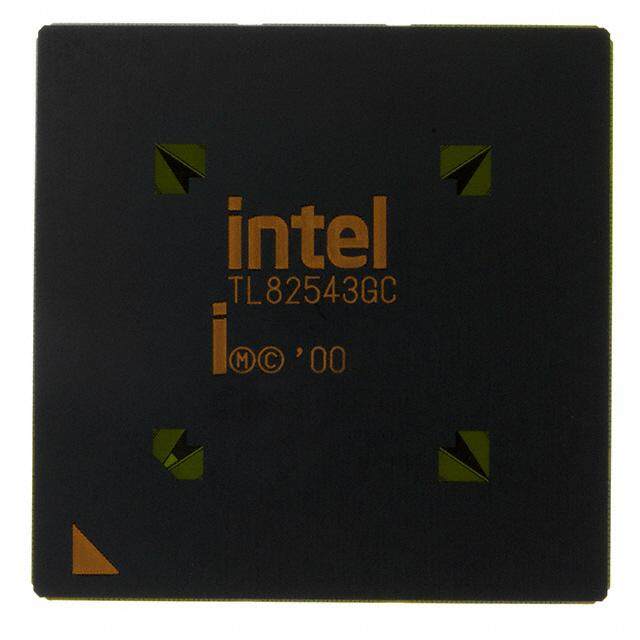
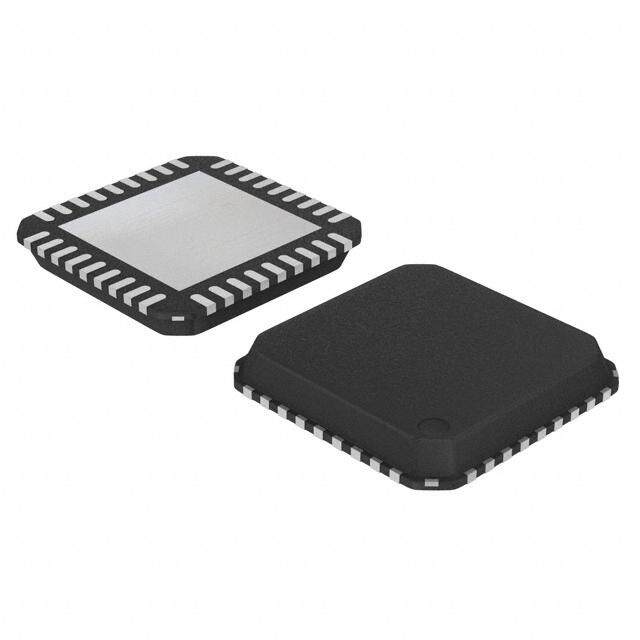

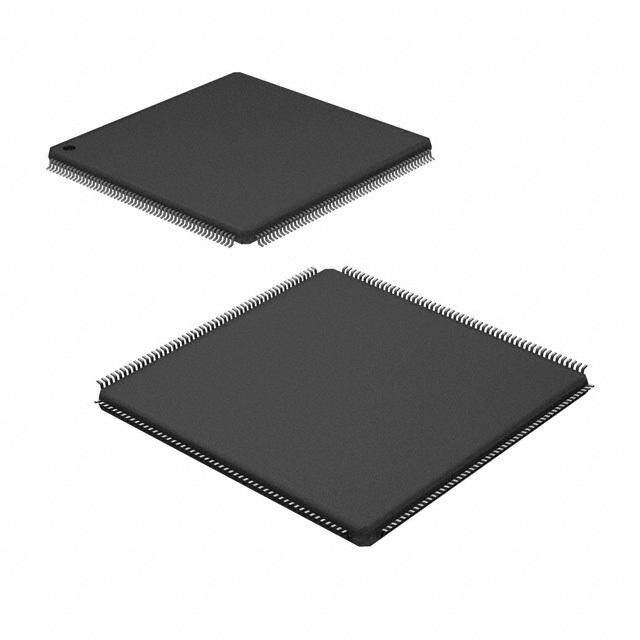
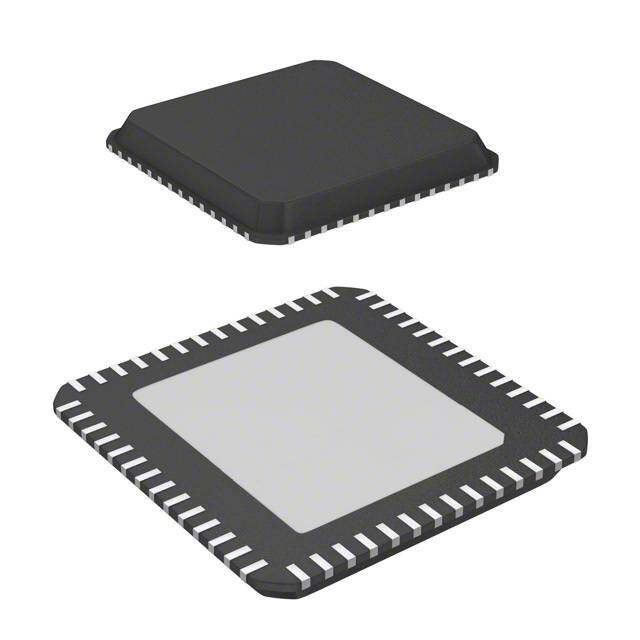
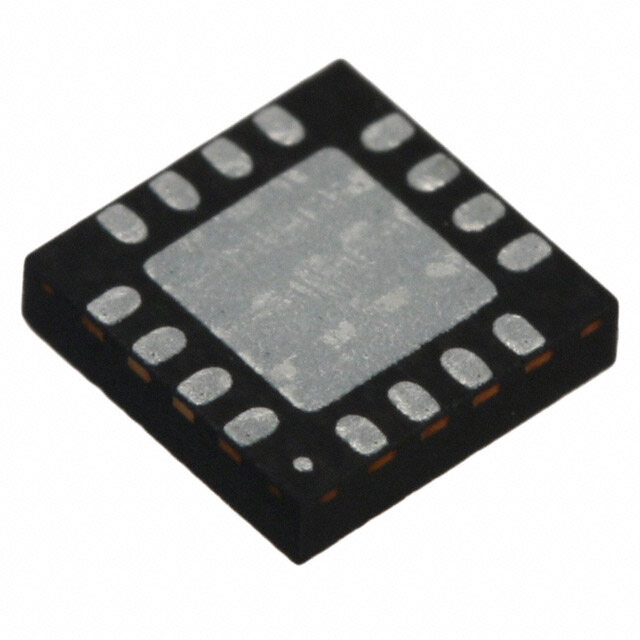

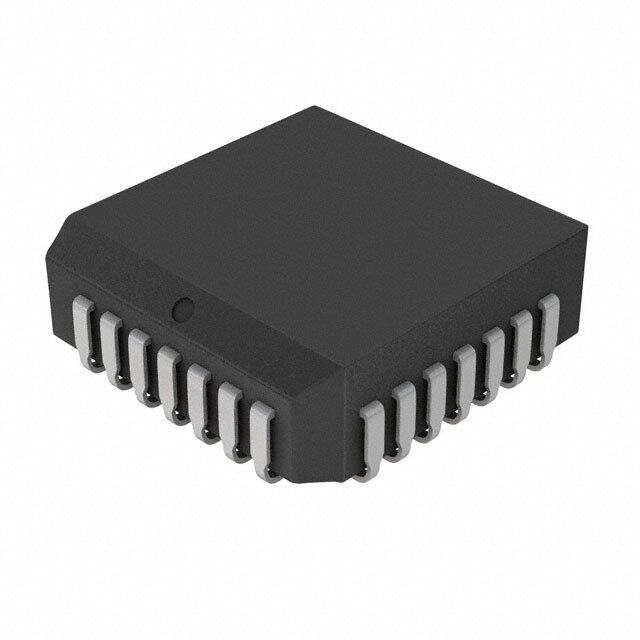

- 商务部:美国ITC正式对集成电路等产品启动337调查
- 曝三星4nm工艺存在良率问题 高通将骁龙8 Gen1或转产台积电
- 太阳诱电将投资9.5亿元在常州建新厂生产MLCC 预计2023年完工
- 英特尔发布欧洲新工厂建设计划 深化IDM 2.0 战略
- 台积电先进制程称霸业界 有大客户加持明年业绩稳了
- 达到5530亿美元!SIA预计今年全球半导体销售额将创下新高
- 英特尔拟将自动驾驶子公司Mobileye上市 估值或超500亿美元
- 三星加码芯片和SET,合并消费电子和移动部门,撤换高东真等 CEO
- 三星电子宣布重大人事变动 还合并消费电子和移动部门
- 海关总署:前11个月进口集成电路产品价值2.52万亿元 增长14.8%
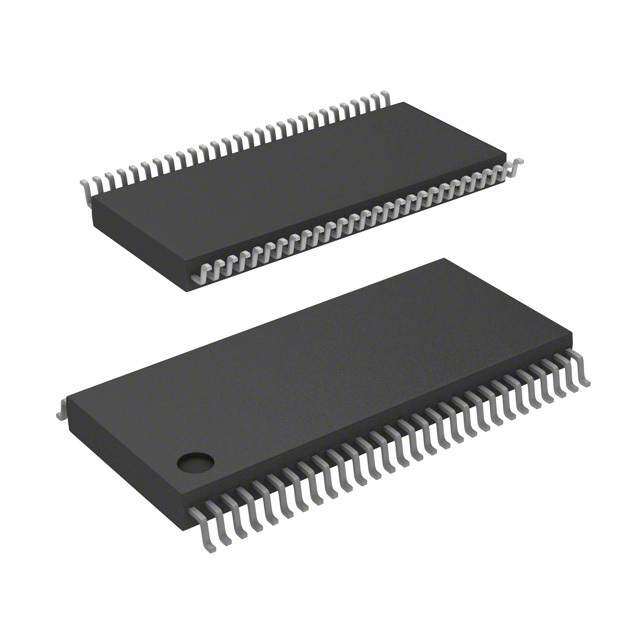

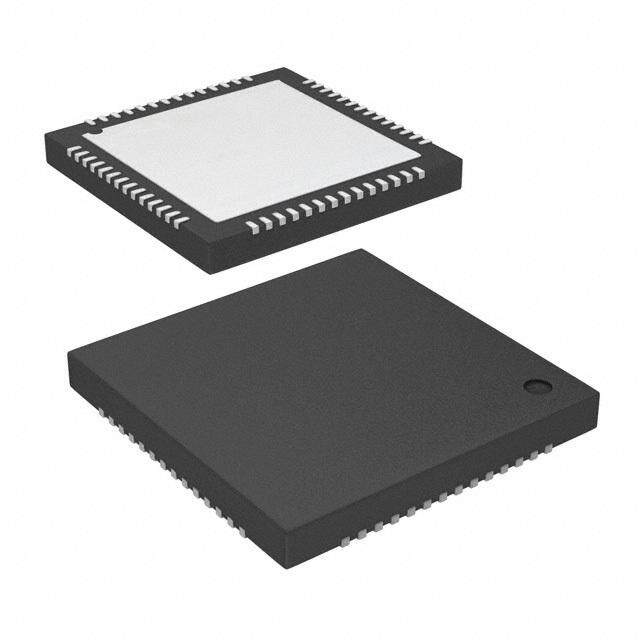
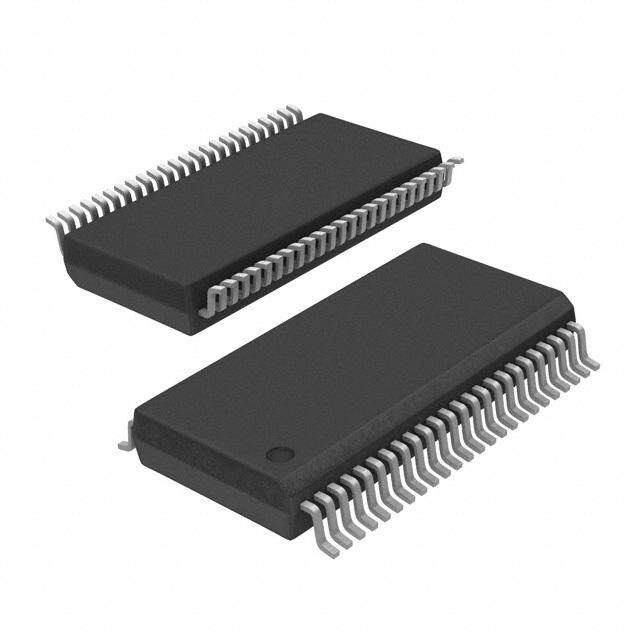


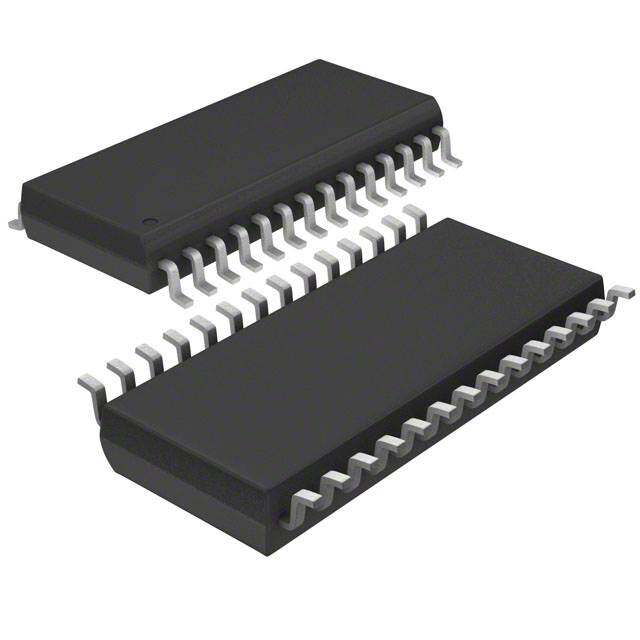
PDF Datasheet 数据手册内容提取
CP2103 SINGLE-CHIP USB TO UART BRIDGE Single-Chip USB to UART Data Transfer Virtual COM Port Device Drivers Integrated USB transceiver; no external resistors Works with Existing COM Port PC Applications required Royalty-Free Distribution License Integrated clock; no external crystal required Windows 7®/Vista®/XP®/Server 2003®/2000® IIDnt,e sgeraritael dn u1m02b4e-rB, yptoew EeEr PdResOcMrip ftoorr, v reenledaosre I Dn,u pmrboedru, ct Mac® OS-X and product description strings Linux On-chip power-on reset circuit USBXpress™ Direct Driver Support On-chip voltage regulator: 3.3V output Royalty-Free Distribution License USB Function Controller Windows 7/Vista/XP/Server 2003/2000 USB Specification 2.0 compliant; full-speed (12Mbps) Windows CE 6.0, 5.0, and 4.2 USB suspend states supported via SUSPEND pins Example Applications Asynchronous Serial Data BUS (UART) Upgrade of RS-232 legacy devices to USB All handshaking and modem interface signals Upgrade of RS-485 legacy devices to USB Data formats supported: Cellular phone USB interface cable - Data bits: 5, 6, 7, and 8 PDA USB interface cable - Stop bits: 1, 1.5, and 2 USB to RS-232 serial adapter - Parity: odd, even, mark, space, no parity Baud rates: 300bps to 1Mbps Supply Voltage 576 Byte receive buffer; 640byte transmit buffer Self-powered: 3.0 to 3.6V Hardware or X-On/X-Off handshaking supported USB bus powered: 4.0 to 5.25V Four GPIO signals for status and control I/O voltage: 1.8V to VDD Configurable I/O (1.8V to VDD) using VIO pin Package Configurable I/O (VDD to 5V) using external pull-up Lead free 28-pin QFN (5x5mm) RS-485 mode with bus transceiver control Ordering Part Number CP2103-GM Temperature Range: –40 to +85°C CP2103 GPIO_0 19 External 5 VIO GPIO_1 18 (to external circuitry voltage supply for status and or direct GPIO_2 17 control) cotnon VeDctDion 7 REGIN IN Voltage 4 GPIO_3 16 Regulator OUT RST 9 (to external circuitry SUSPEND 12 for USB suspend 6 VDD 3.3 V SUSPEND 11 states) 2 GND RI 1 48 MHz USB 8 VBUS Oscillator DCD 28 CONNECTOR DTR 27 External RS-232 VGBNUDDDS+- 3412 34 DD+- TranUsScBeiver USCBo nF6tur4on0lclBetir on576B UART RDTXXSDDR 222654 UtrAanRsTc eciivrceur itorry 6 5 EE10P2R4OBM BuTfXfe r BRufXfe r CRTTSS 2232 Figure 1. Example System Diagram Rev. 1.0 12/10 Copyright © 2010 by Silicon Laboratories CP2103
CP2103 2 Rev. 1.0
CP2103 TABLE OF CONTENTS Section Page 1. System Overview . . . . . . . . . . . . . . . . . . . . . . . . . . . . . . . . . . . . . . . . . . . . . . . . . . . . . . . . .4 2. Electrical Specifications . . . . . . . . . . . . . . . . . . . . . . . . . . . . . . . . . . . . . . . . . . . . . . . . . . .5 3. Pinout and Package Definitions . . . . . . . . . . . . . . . . . . . . . . . . . . . . . . . . . . . . . . . . . . . . .8 4. USB Function Controller and Transceiver . . . . . . . . . . . . . . . . . . . . . . . . . . . . . . . . . . . .13 5. Asynchronous Serial Data Bus (UART) Interface . . . . . . . . . . . . . . . . . . . . . . . . . . . . . .14 6. GPIO Pins . . . . . . . . . . . . . . . . . . . . . . . . . . . . . . . . . . . . . . . . . . . . . . . . . . . . . . . . . . . . . .14 7. Internal EEPROM . . . . . . . . . . . . . . . . . . . . . . . . . . . . . . . . . . . . . . . . . . . . . . . . . . . . . . . .14 8. CP2103 Device Drivers . . . . . . . . . . . . . . . . . . . . . . . . . . . . . . . . . . . . . . . . . . . . . . . . . . .15 8.1. Virtual COM Port Drivers . . . . . . . . . . . . . . . . . . . . . . . . . . . . . . . . . . . . . . . . . . . . . .15 8.2. USBXpress Drivers . . . . . . . . . . . . . . . . . . . . . . . . . . . . . . . . . . . . . . . . . . . . . . . . . .15 8.3. Driver Customization . . . . . . . . . . . . . . . . . . . . . . . . . . . . . . . . . . . . . . . . . . . . . . . . .15 8.4. Driver Certification . . . . . . . . . . . . . . . . . . . . . . . . . . . . . . . . . . . . . . . . . . . . . . . . . . .15 9. Voltage Regulator . . . . . . . . . . . . . . . . . . . . . . . . . . . . . . . . . . . . . . . . . . . . . . . . . . . . . . . .16 10. Relevant Application Notes . . . . . . . . . . . . . . . . . . . . . . . . . . . . . . . . . . . . . . . . . . . . . . .18 Document Change List . . . . . . . . . . . . . . . . . . . . . . . . . . . . . . . . . . . . . . . . . . . . . . . . . . . . .19 Contact Information . . . . . . . . . . . . . . . . . . . . . . . . . . . . . . . . . . . . . . . . . . . . . . . . . . . . . . . .20 Rev. 1.0 3
CP2103 1. System Overview The CP2103 is a highly-integrated USB-to-UART Bridge Controller providing a simple solution for updating RS-232/RS-485 designs to USB using a minimum of components and PCB space. The CP2103 includes a USB 2.0 full-speed function controller, USB transceiver, oscillator, EEPROM, and asynchronous serial data bus (UART) with full modem control signals in a compact 5x5mm QFN-28 package (sometimes called “MLF” or “MLP”). No other external USB components are required. The on-chip EEPROM may be used to customize the USB Vendor ID, Product ID, Product Description String, Power Descriptor, Device Release Number, and Device Serial Number as desired for OEM applications. The EEPROM is programmed on-board via the USB, allowing the programming step to be easily integrated into the product manufacturing and testing process. Royalty-free Virtual COM Port (VCP) device drivers provided by Silicon Laboratories allow a CP2103-based product to appear as a COM port to PC applications. The CP2103 UART interface implements all RS-232/RS-485 signals, including control and handshaking signals; so, existing system firmware does not need to be modified. The device also features up to four GPIO signals that can be user-defined for status and control information. Support for I/O interface voltages down to 1.8V is provided via a V pin. In many existing RS-232 designs, all that is IO required to update the design from RS-232 to USB is to replace the RS-232 level-translator with the CP2103. Direct access driver support is available through the Silicon Laboratories USBXpress driver set. Go to www.silabs.com for the latest application notes and product support information for CP2103. An evaluation kit for the CP2103 (Part Number: CP2103EK) is available. It includes a CP2103-based USB-to- UART/RS-232 evaluation board, a complete set of VCP device drivers, USB and RS-232 cables, and complete documentation. Contact a Silicon Labs sales representatives or visit www.silabs.com to order the CP2103 Evaluation Kit. 4 Rev. 1.0
CP2103 2. Electrical Specifications Table 1. Absolute Maximum Ratings Parameters Conditions Min Typ Max Units Ambient Temperature under bias –55 — 125 °C Storage Temperature –65 — 150 °C Voltage on any I/O Pin or RST with respect to GND –0.3 — 5.8 V Voltage on V or V with respect to GND –0.3 — 4.2 V DD IO Maximum Total Current through V , V , and GND — — 500 mA DD IO Maximum Output Current sunk by RST or any I/O pin — — 100 mA Note: Stresses above those listed may cause permanent damage to the device. This is a stress rating only, and functional operation of the devices at or exceeding the conditions in the operation listings of this specification is not implied. Exposure to maximum rating conditions for extended periods may affect device reliability. Table 2. Global DC Electrical Characteristics V =3.0 to 3.6V, –40 to +85 °C unless otherwise specified DD Parameters Conditions Min Typ Max Units Supply Voltage (V ) 3.0 3.3 3.6 V DD Supply Voltage (V ) 1.8 3.3 V V IO DD Supply Current1 Normal Operation, — 20 26 mA V Enabled REG Supply Current1 Suspended, — 80 100 µA V Enabled REG Supply Current - USB Pull-up2 — 200 228 µA V Supply Current VBUS=0 — 500 — µA IO V =0 DD V =3.0V IO Specified Operating Temperature Range –40 — +85 °C Notes: 1. If the device is connected to the USB bus, the USB Pull-up Current should be added to the supply current for total supply current. 2. The USB pull-up supply current values are calculated based on USB specifications. Rev. 1.0 5
CP2103 Table 3. UART and Suspend I/O DC Electrical Characteristics V =V =2.7 to 3.6V, –40 to +85°C unless otherwise specified IO DD Parameters Conditions Min Typ Max Units Output High Voltage (V ) I =–10µA V –0.1 — — OH OH IO I =–3mA V –0.7 — — V OH IO I =–10mA — V –0.8 — OH IO Output Low Voltage (V ) I =8.5mA — — 0.6 OL OL V I =10µA — — 0.1 OL Input High Voltage (V ) 2.0 — — V IH Input Low Voltage (V ) — — 0.8 V IL Input Leakage Current Weak pull-ups enabled — 25 50 µA Weak pull-ups disabled — — ±1 Maximum Input Voltage Open drain, logic high (1) — — 5.8 V Table 4. UART and Suspend I/O DC Electrical Characteristics (Low-Voltage Operation) V =1.8V, V =2.7 to 3.6V, –40 to +85°C unless otherwise specified IO DD Parameters Conditions Min Typ Max Units Output High Voltage (V ) I =–10µA V –0.1 — — OH OH IO V I =–1mA V –0.4 — — OH IO Output Low Voltage (V ) I =10µA — — 0.1 OL OL V I =3mA — — 0.4 OL Input High Voltage (V ) V x 0.7 — — V IH IO Input Low Voltage (V ) — — V x 0.3 V IL IO Input Leakage Current Weak pull-ups enabled — — ±1 µA Weak pull-ups disabled — 6 15 Maximum Input Voltage Open drain, logic high (1) — — 5.8 V 6 Rev. 1.0
CP2103 Table 5. Reset Electrical Characteristics –40 to +85 °C unless otherwise specified Parameters Conditions Min Typ Max Units RST Input High Voltage 0.7 x VIO — — V RST Input Low Voltage — — 0.3 x VIO V Minimum RST Low Time to 15 — — µs Generate a System Reset Table 6. Voltage Regulator Electrical Specifications –40 to +85°C unless otherwise specified Parameters Conditions Min Typ Max Units Input Voltage Range 4.0 — 5.25 V Output Voltage Output Current=1 to 100mA* 3.0 3.3 3.6 V VBUS Detection Input Threshold 1.0 1.8 4.0 V Bias Current — 110 — µA *Note: The maximum regulator supply current is 100mA. Rev. 1.0 7
CP2103 3. Pinout and Package Definitions Table 7. CP2103 Pin Definitions Name Pin # Type Description V 6 Power In 3.0–3.6V Power Supply Voltage Input. DD Power Out 3.3V Voltage Regulator Output. See "9. Voltage Regulator" on page 16. V 5 Power In 1.8V to V I/O Supply Voltage Input. IO DD GND 2 Ground. Must be tied to ground. SGND Ground. Must be tied to ground. RST 9 D I/O Device Reset. Open-drain output of internal POR or V monitor. An DD external source can initiate a system reset by driving this pin low for at least 15µs. REGIN 7 Power In 5V Regulator Input. This pin is the input to the on-chip voltage regu- lator. VBUS 8 D In VBUS Sense Input. This pin should be connected to the VBUS signal of a USB network. A 5V signal on this pin indicates a USB network connection. D+ 3 D I/O USB D+ D– 4 D I/O USB D– TXD 25 D Out Asynchronous data output (UART Transmit) RXD 24 D In Asynchronous data input (UART Receive) CTS 22* D In Clear To Send control input (active low) RTS 23* D Out Ready to Send control output (active low) DSR 26* D in Data Set Ready control input (active low) DTR 27* D Out Data Terminal Ready control output (active low) DCD 28* D In Data Carrier Detect control input (active low) RI 1* D In Ring Indicator control input (active low) SUSPEND 12* D Out This pin is driven high when the CP2103 enters the USB suspend state. SUSPEND 11* D Out This pin is driven low when the CP2103 enters the USB suspend state. NC 10, 13–15, These pins should be left unconnected or tied to V . DD 20–21 GPIO.3 16 D I/O User-configurable input or output. GPIO.2 17 D I/O User-configurable input or output. GPIO.1 18 D I/O User-configurable input or output. GPIO.0 19 D I/O User-configurable input or output. *Note: Pins can be left unconnected when not used. 8 Rev. 1.0
CP2103 D R R D D S S C T S X X T T D D D T R R C 8 7 6 5 4 3 2 SGND 2 2 2 2 2 2 2 RI 1 21 NC GND 2 20 NC D+ 3 19 GPIO.0 CP2103 D- 4 18 GPIO.1 Top View V 5 17 GPIO.2 IO V 6 16 GPIO.3 DD SGND REGIN 7 15 NC 8 9 10 11 12 13 14 S T C D D C C U S N N N N N B R E E V P P S S U U S S Figure 2. QFN-28 Pinout Diagram (Top View) Rev. 1.0 9
CP2103 Figure 3. QFN-28 Package Drawing Table 8. QFN-28 Package Dimensions Dimension Min Nom Max Dimension Min Nom Max A 0.80 0.90 1.00 E2 2.90 3.15 3.35 A1 0.03 0.07 0.11 L 0.45 0.55 0.65 A3 0.25 REF aaa 0.15 b 0.18 0.25 0.30 bbb 0.10 D 5.00 BSC. ddd 0.05 D2 2.90 3.15 3.35 eee 0.08 e 0.50 BSC. Z 0.435 E 5.00 BSC. Y 0.18 Notes: 1. All dimensions shown are in millimeters (mm) unless otherwise noted. 2. Dimensioning and tolerancing per ANSI Y14.5M-1994. 3. This drawing conforms to JEDEC outline MO-243, variation VHHD except for custom features D2, E2, L, Z, and Y which are toleranced per supplier designation. 4. Recommended card reflow profile is per the JEDEC/IPC J-STD-020 specification for small body components. 10 Rev. 1.0
CP2103 Figure 4. Typical QFN-28 Land Pattern Rev. 1.0 11
CP2103 Figure 5. Typical QFN-28 Solder Paste Diagram 12 Rev. 1.0
CP2103 4. USB Function Controller and Transceiver The universal serial bus function controller in the CP2103 is a USB 2.0 compliant full-speed device with integrated transceiver and on-chip matching and pull-up resistors. The USB function controller manages all data transfers between the USB and the UART as well as command requests generated by the USB host controller and commands for controlling the function of the UART. The USB Suspend and Resume signals are supported for power management of both the CP2103 device as well as external circuitry. The CP2103 will enter Suspend mode when Suspend signaling is detected on the bus. Upon entering Suspend mode, the CP2103 asserts the SUSPEND and SUSPEND signals. SUSPEND and SUSPEND are also asserted after a CP2103 reset until device configuration during USB Enumeration is complete. The CP2103 exits the Suspend mode when any of the following events occurs: (1) Resume signaling is detected or generated, (2) a USB Reset signal is detected, or (3) a device reset occurs. Upon exit from Suspend mode, the SUSPEND and SUSPEND signals are de-asserted. Both SUSPEND and SUSPEND temporarily float high during a CP2103 reset. If this behavior is undesirable, a strong pulldown (10k) can be used to ensure SUSPEND remains low during reset. See Figure6 for other recommended options. I/O Voltage CP2103 5 VIO 1 F VDD R1 4.7 k Option 1 7 REGIN C1 9 RST 1 F (to external circuitry SUSPEND 12 for USB suspend states) 6 11 VDD SUSPEND C4 C2 R2 4.7 F 0.1 F 10 k 2 GND 1 Option 4 RI Option 2 28 8 DCD External RS-232 USB VBUS 27 transceiver or CONNECTOR DTR UART circuitry 26 VBUS 1 DSR D- 2 4 D- TXD 25 D+ 3 GND 4 3 D+ RXD 24 23 RTS 6 5 D1 D2 D3 Option 3 CTS 22 19 GPIO.0 GPIO.1 18 External Application 17 GPIO.2 Circuitry 16 GPIO.3 Option 1: A 4.7 k pull-up resistor can be added to increase noise immunity. Option 2: A 4.7 µF capacitor can be added if powering other devices from the on-chip regulator. Option 3: Avalanche transient voltage suppression diodes should be added for ESD protection. Option 3: Use Littlefuse p/n SP0503BAHT or equivalent. Option 4: 10 k resistor to ground to hold SUSPEND low on initial power on or device reset. Figure 6. Typical Connection Diagram Rev. 1.0 13
CP2103 5. Asynchronous Serial Data Bus (UART) Interface The CP2103 UART interface consists of the TX (transmit) and RX (receive) data signals as well as the RTS, CTS, DSR, DTR, DCD, and RI control signals. The UART supports RTS/CTS, DSR/DTR, and X-On/X-Off handshaking. The UART can be programmed to support a variety of data formats and baud rates. If the Virtual COM Port drivers are used, the data format and baud rate are set during COM port configuration on the PC. If the USBXpress drivers are used, the CP2103 is configured through the USBXpress API. The available data formats and baud rates are listed in Table9. Table 9. Data Formats and Baud Rates Data Bits 5, 6, 7, and 8 Stop Bits 1, 1.51, and 2 Parity Type None, Even, Odd, Mark, Space Baud Rates2 300, 600, 1200, 1800, 2400, 4000, 4800, 7200, 9600, 14400, 16000, 19200, 28800, 38400, 51200, 56000, 57600, 64000, 76800, 115200, 128000, 153600, 230400, 250000, 256000, 460800, 500000, 576000, 9216003 Notes: 1. 5-bit only. 2. Additional baud rates are supported. See “AN205: CP210x Baud Rate Support”. 3. 7 or 8 data bits only. 6. GPIO Pins The CP2103 supports four user-configurable GPIO pins for status and control information. More information regarding the configuration and use of these pins can be found in “AN144: CP21xx Device Customization Guide” and “AN223: Port Configuration and GPIO for CP210x” available at www.silabs.com. 7. Internal EEPROM The CP2103 includes an internal EEPROM that may be used to customize the USB Vendor ID (VID), Product ID (PID), Product Description String, Power Descriptor, Device Release Number, and Device Serial Number as desired for OEM applications. If the EEPROM is not programmed with OEM data, the default configuration data shown in Table10 is used. While customization of the USB configuration data is optional, it is recommended to customize the VID/PID combination. A unique VID/PID combination prevents the driver from conflicting with any other USB driver. A vendor ID can be obtained from www.usb.org, or Silicon Labs can provide a free PID for the OEM product that can be used with the Silicon Laboratories VID. It is also recommended to customize the serial number if the OEM application is one in which it is possible for multiple CP2103-based devices to be connected to the same PC. The internal EEPROM is programmed via the USB. This allows the OEM's USB configuration data and serial number to be written to the CP2103 on-board during the manufacturing and testing process. A stand-alone utility for programming the internal EEPROM is available from Silicon Labs. A library of routines provided in the form of a Windows® DLL is also available. This library can be used to integrate the EEPROM programming step into custom software used by the OEM to streamline testing and serial number management during manufacturing. The EEPROM has a typical endurance of 100,000 write cycles with a data retention of 100 years. USB descriptors can be locked to prevent future modification. 14 Rev. 1.0
CP2103 Table 10. Default USB Configuration Data Name Value Vendor ID 10C4h Product ID EA60h Power Descriptor (Attributes) 80h Power Descriptor (Max. Power) 32h Release Number 0100h Serial Number 0001 (63 characters maximum) Product Description String “CP2103 USB to UART Bridge Controller” (126 characters maximum) 8. CP2103 Device Drivers There are two sets of device drivers available for the CP2103 devices: the Virtual COM Port (VCP) drivers and the USBXpress Direct Access drivers. Only one set of drivers is necessary to interface with the device. The latest drivers are available at http://www.silabs.com/products/microcontroller/downloads.asp. 8.1. Virtual COM Port Drivers The CP2103 Virtual COM Port (VCP) device drivers allow a CP2103-based device to appear to the PC's application software as a COM port. Application software running on the PC accesses the CP2103-based device as it would access a standard hardware COM port. However, actual data transfer between the PC and the CP2103 device is performed over the USB interface. Therefore, existing COM port applications may be used to transfer data via the USB to the CP2103-based device without modifying the application. See “AN197: Serial Communications Guide for the CP210x” for example code for interfacing to a CP2103 using the Virtual COM drivers. 8.2. USBXpress Drivers The Silicon Laboratories USBXpress drivers provide an alternate solution for interfacing with CP2103 devices. No serial port protocol expertise is required. Instead, a simple, high-level application program interface (API) is used to provide simpler CP201x connectivity and functionality. The USBXpress for CP210x Development Kit includes Windows device drivers, Windows device driver installers and uninstallers, and a host interface function library (host API) provided in the form of a Windows Dynamic Link Library (DLL). The USBXpress driver set is recommended for new products that also include new PC software. The USBXpress interface is described in “AN169: USBXpress® Programmer's Guide.” 8.3. Driver Customization In addition to customizing the device as described in “7. Internal EEPROM” , the drivers and the drivers installation package can be also be customized. See “AN220: USB Driver Customization” for more information on generating customized VCP and USBXpress drivers. 8.4. Driver Certification The default drivers that are shipped with the CP2103 are Microsoft WHQL (Windows Hardware Quality Labs) certified. The certification means that the drivers have been tested by Microsoft, and their latest operating systems (XP and Vista) allow the drivers to be installed without any warnings or errors. The customized drivers generated using the AN220 software are not automatically certified. They must go first through the Microsoft Driver Reseller Submission process. Contact Silicon Laboratories support for assistance with this process. Rev. 1.0 15
CP2103 9. Voltage Regulator The CP2103 includes an on-chip 5 to 3V voltage regulator. This allows the CP2103 to be configured as either a USB bus-powered device or a USB self-powered device. These configurations are shown in Figures 7 and 8. When enabled, the 3V voltage regulator output appears on the V pin and can be used to power external 3V DD devices. See Table11 for the voltage regulator electrical characteristics. Alternatively, if 3V power is supplied to the V pin, the CP2103 can function as a USB self-powered device with DD the voltage regulator disabled. For this configuration, it is recommended that the REGIN input be tied to the 3V net to disable the voltage regulator. This configuration is shown in Figure9. The USB max power and power attributes descriptor must match the device power usage and configuration. See “AN144: CP21xx Device Customization Guide” for information on how to customize USB descriptors for the CP2103. Note: It is recommended that additional decoupling capacitance (e.g., 0.1µF in parallel with 1.0µF) be provided on the REGIN input. Table 11. Voltage Regulator Electrical Specifications –40 to +85°C unless otherwise specified. Parameter Conditions Min Typ Max Units Input Voltage Range 4.0 — 5.25 V Output Voltage Output Current=1 to 100mA* 3.0 3.3 3.6 V VBUS Detection Input Threshold 1.0 1.8 4.0 V Bias Current — 110 — µA *Note: The maximum regulator supply current is 100mA. CP2103 VBUS From VBUS VBUS Sense REGIN 5 V In Voltage Regulator (REG0) 3 V Out To 3 V VDD Device Power Net Power Net Figure 7. Configuration 1: USB Bus-Powered 16 Rev. 1.0
CP2103 CP2103 VBUS From VBUS VBUS Sense From 5 V REGIN 5 V In Voltage Regulator (REG0) Power Net 3 V Out To 3V VDD Device Power Net Power Net Figure 8. Configuration 2: USB Self-Powered CP2103 VBUS From VBUS VBUS Sense REGIN 5 V In Voltage Regulator (REG0) 3 V Out From 3 V VDD Device Power Net Power Net Figure 9. Configuration 3: USB Self-Powered, Regulator Bypassed Rev. 1.0 17
CP2103 10. Relevant Application Notes The following application notes are applicable to the CP2103. The latest versions of these application notes and their accompanying software are available at: http://www.silabs.com/products/mcu/Pages/ApplicationNotes.aspx. AN144: CP21xx Device Customization Guide This application note describes how to use the AN144 software to configure the USB parameters on the CP2103 devices. AN169: USBXpress® Programmer's Guide This application note describes the USBXpress API interface and includes example code. AN197: Serial Communications Guide for the CP210x This application note describes how to use the standard Windows COM port function to communicate with the CP2103 and includes example code. AN205: CP210x Baud Rate Support This application note describes how to use the AN205 software to configure the baud rate aliasing feature on the CP2103 devices. AN220: USB Driver Customization This application note describes how to use the AN220 software to customize the VCP or USBXpress drivers with OEM information. AN223: Port Configuration And GPIO for CP210x This application note describes how to use the AN223 software to configure the GPIO’s other configurable pins. 18 Rev. 1.0
CP2103 DOCUMENT CHANGE LIST Revision 0.1 to Revision 0.2 Updated “Linux 2.40” bullet on page 1. Revision 0.2 to Revision 0.3 Added additional supported operating systems on page 1. Changed VDD conditions of Tables 2 and 3 from a minimum of 2.7 to 3.0V. Updated typical and max Supply current numbers in Table2. Updated package drawings in Figures 3, 4, and 5. Removed tantalum requirement in Figure6. Consolidate Sections 9 and 10. Added Section "10. Relevant Application Notes" on page 18. Revision 0.3 to Revision 0.4 Added voltage numbers to Table4 on page6. Corrected notes numbering in Table8 on page10. Revision 0.4 to Revision 1.0 Updated supported operating systems on page 1. Updated notes in Table2. Updated AN144 title throughout document. Rev. 1.0 19
Simplicity Studio One-click access to MCU and wireless tools, documentation, software, source code libraries & more. Available for Windows, Mac and Linux! IoT Portfolio SW/HW Quality Support and Community www.silabs.com/IoT www.silabs.com/simplicity www.silabs.com/quality community.silabs.com Disclaimer Silicon Labs intends to provide customers with the latest, accurate, and in-depth documentation of all peripherals and modules available for system and software implementers using or intending to use the Silicon Labs products. Characterization data, available modules and peripherals, memory sizes and memory addresses refer to each specific device, and "Typical" parameters provided can and do vary in different applications. Application examples described herein are for illustrative purposes only. Silicon Labs reserves the right to make changes without further notice and limitation to product information, specifications, and descriptions herein, and does not give warranties as to the accuracy or completeness of the included information. Silicon Labs shall have no liability for the consequences of use of the information supplied herein. This document does not imply or express copyright licenses granted hereunder to design or fabricate any integrated circuits. The products are not designed or authorized to be used within any Life Support System without the specific written consent of Silicon Labs. A "Life Support System" is any product or system intended to support or sustain life and/or health, which, if it fails, can be reasonably expected to result in significant personal injury or death. Silicon Labs products are not designed or authorized for military applications. Silicon Labs products shall under no circumstances be used in weapons of mass destruction including (but not limited to) nuclear, biological or chemical weapons, or missiles capable of delivering such weapons. Trademark Information Silicon Laboratories Inc.® , Silicon Laboratories®, Silicon Labs®, SiLabs® and the Silicon Labs logo®, Bluegiga®, Bluegiga Logo®, Clockbuilder®, CMEMS®, DSPLL®, EFM®, EFM32®, EFR, Ember®, Energy Micro, Energy Micro logo and combinations thereof, "the world’s most energy friendly microcontrollers", Ember®, EZLink®, EZRadio®, EZRadioPRO®, Gecko®, ISOmodem®, Precision32®, ProSLIC®, Simplicity Studio®, SiPHY®, Telegesis, the Telegesis Logo®, USBXpress® and others are trademarks or registered trademarks of Silicon Labs. ARM, CORTEX, Cortex-M3 and THUMB are trademarks or registered trademarks of ARM Holdings. Keil is a registered trademark of ARM Limited. All other products or brand names mentioned herein are trademarks of their respective holders. Silicon Laboratories Inc. 400 West Cesar Chavez Austin, TX 78701 USA http://www.silabs.com
Mouser Electronics Authorized Distributor Click to View Pricing, Inventory, Delivery & Lifecycle Information: S ilicon Laboratories: CP2103-GMR CP2103-GM CP2103EK
 Datasheet下载
Datasheet下载
